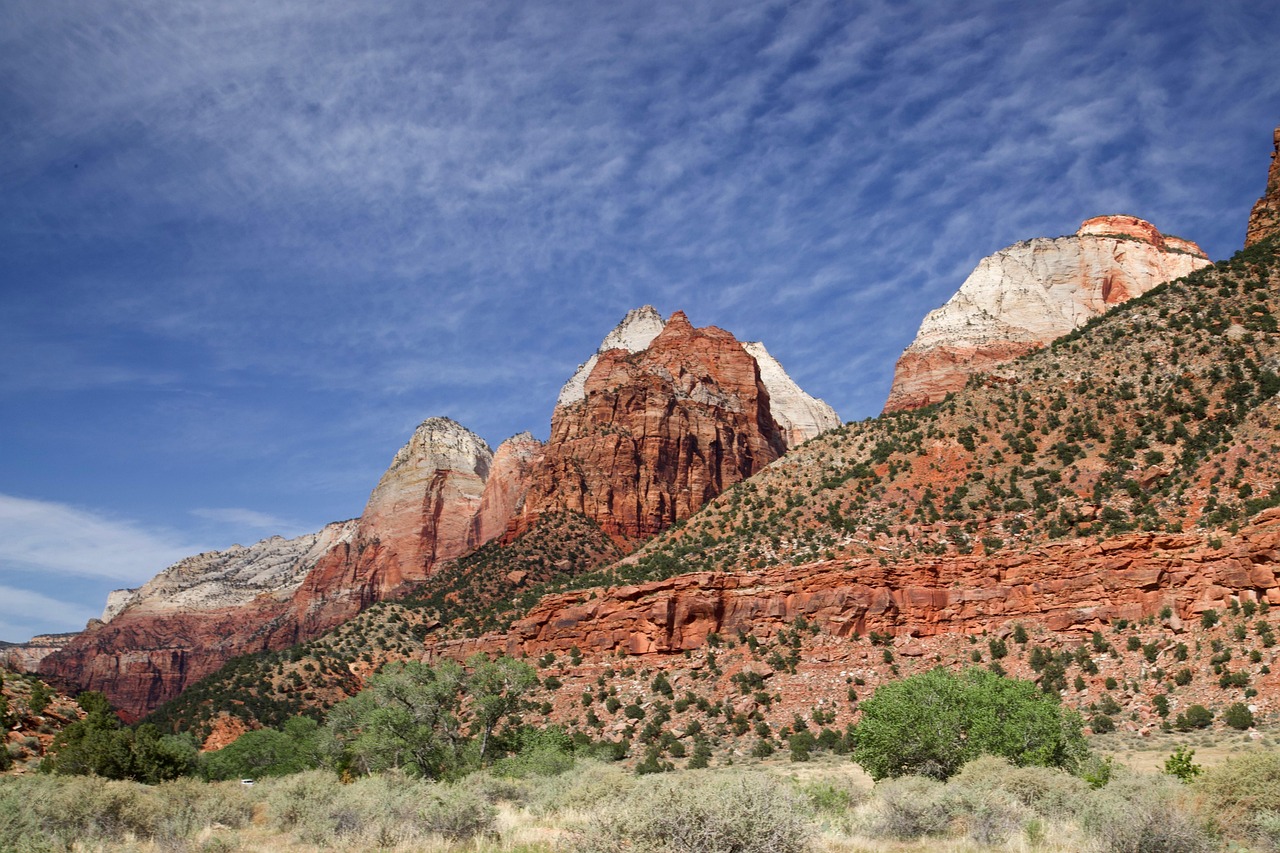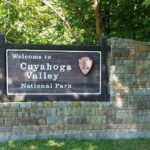Quick Bits:
Zion National Park, nestled in southwestern Utah, paints a bold picture. Sculpted over millions of years, its canyons and cliffs tell a story written in rock. It stands as a monument to time and the raw power of erosion. People from across the globe travel here, drawn by its grandeur and silence. Towering sandstone walls greet dawn and dusk with colors that shift and shimmer. It’s not merely a park; it’s a living mural.
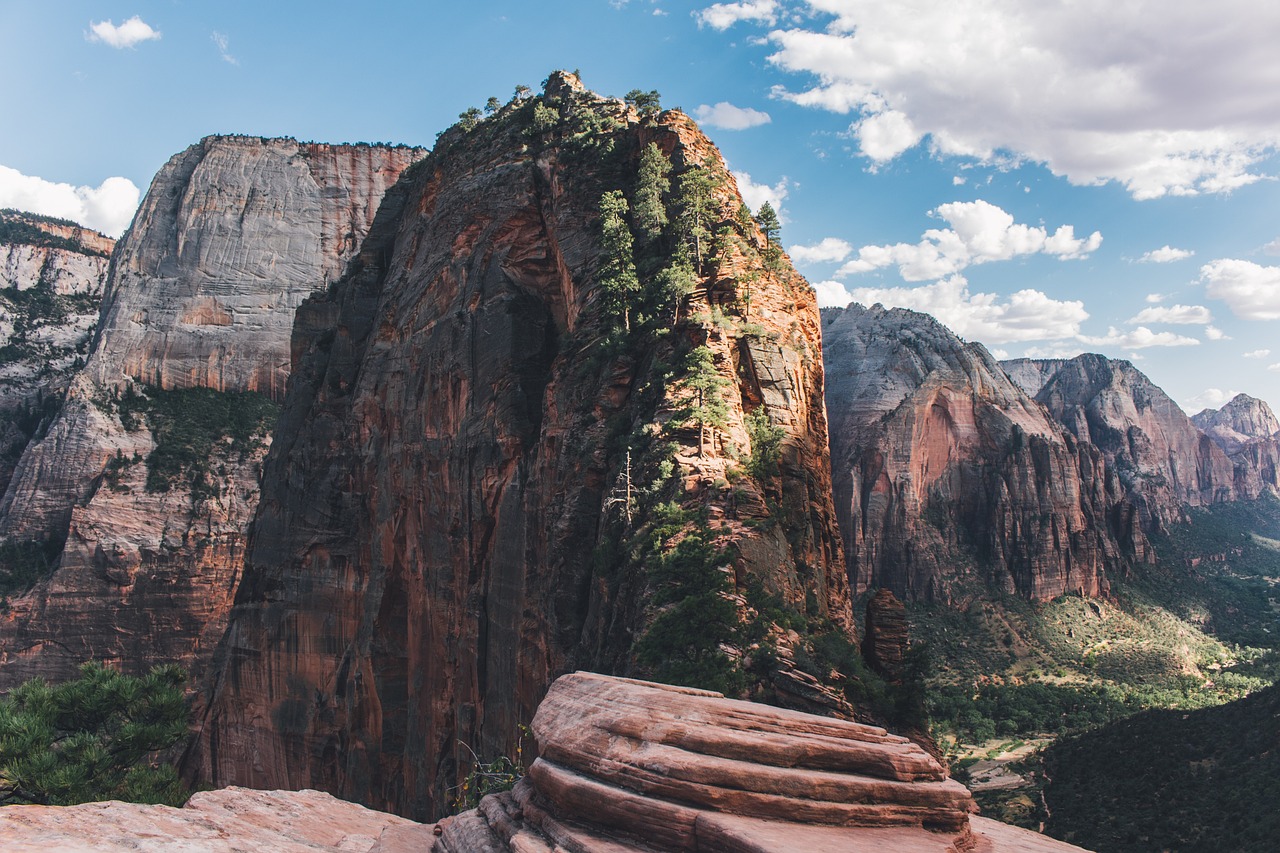
Image by: Pexels – Via Pixabay
Key Highlights
- Location: Springdale, Utah
-
Established: 1919
-
Size: Over 229 square miles
-
Famous Trails: Angels Landing, The Narrows, Emerald Pools
-
Notable Wildlife: Bighorn sheep, mule deer, golden eagles
-
Iconic Formations: The Great White Throne, Court of the Patriarchs, Checkerboard Mesa
-
River: Virgin River – a lifeline through the desert
-
Park Elevation Range: 3,666 to 8,726 feet.
General Information
Zion National Park was the first in Utah’s roster of natural wonders. It became a national park in 1919, though protection efforts date back to 1909. The name “Zion” comes from a Hebrew word for refuge or sanctuary. Early Mormon settlers gave the name to the canyon. The name stuck, echoing the spiritual sense many feel upon entering the park.
Millions pass through its gates each year. The park offers more than 90 miles of hiking trails. These range from paved paths to steep switchbacks that flirt with canyon edges. The Zion Canyon Scenic Drive is one of the most traveled routes. During high-traffic months, only shuttle buses can navigate it. This protects the landscape and eases congestion.
There are no fast-moving rides or flashing lights. Instead, Zion provides a slow kind of thrill. It offers depth, stillness, and grandeur all wrapped in red rock.
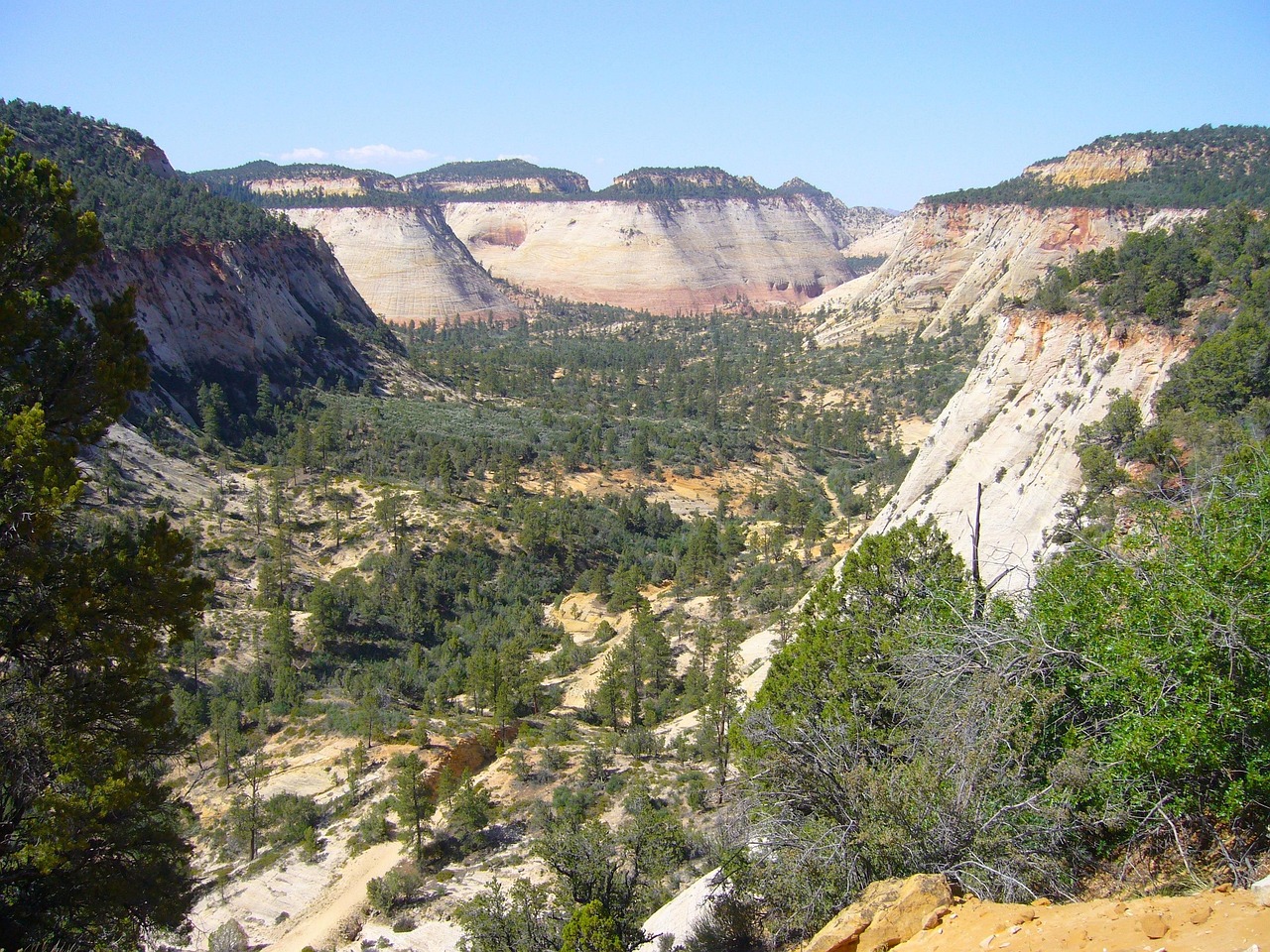
Image From Pixabay
Geography Information
Zion is a place of extremes. Its landscape features deep canyons carved by the Virgin River and sharp rock spires that stab the sky. The geologic layers stretch back more than 150 million years. Each tells a story of ancient deserts, rivers, and seas.
The most iconic feature is Zion Canyon. It cuts a deep swath through the Navajo Sandstone, some walls rising over 2,000 feet. The contrast between lush vegetation along the river and the dry, rocky heights above creates striking beauty. The park also includes Kolob Canyons to the northwest. Though less visited, they offer serene trails and views.
Elevations vary by thousands of feet, which means ecosystems shift quickly. One moment brings cactus and red rock; another brings pine and high plateaus.
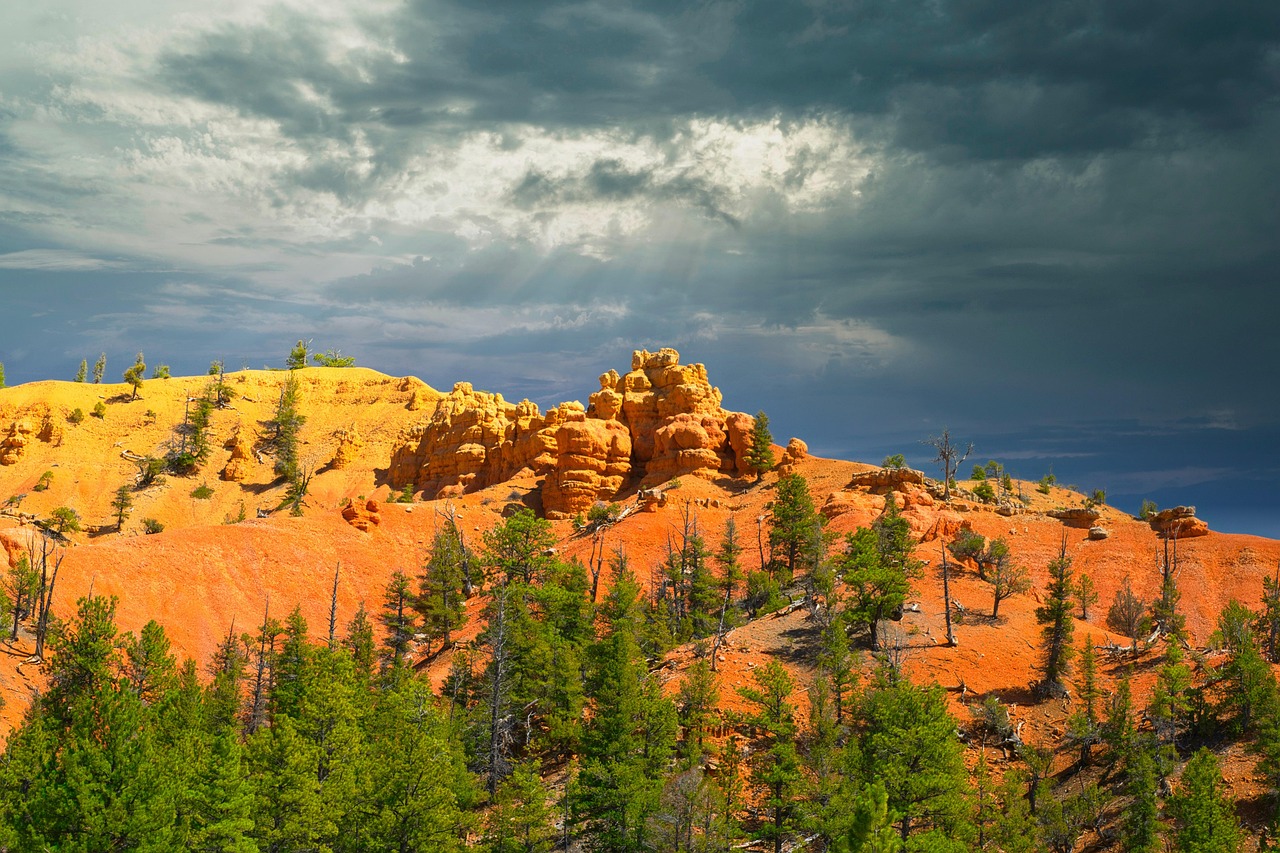
Image by: ericncindy – Via Pixabay
Places to Visit
1. Angels Landing
This hike is not for the faint of heart. With drop-offs on both sides and a chain-assisted final stretch, it challenges and rewards. At the summit, views stretch across the canyon in a dizzying panorama.
2. The Narrows
Wade through the Virgin River itself, framed by walls rising a thousand feet. This slot canyon hike is both scenic and immersive. Water levels vary, and weather must be checked before entering.
3. Emerald Pools
Waterfalls and hanging gardens make these pools a favorite. There are lower, middle, and upper trails, each offering distinct views. It’s one of the most accessible hikes in the park.
4. Canyon Overlook Trail
A short trail with a big payoff. It offers stunning views of Zion Canyon without a grueling climb.
5. Kolob Canyons
This lesser-known section brings solitude and sweeping views. The five-mile scenic drive leads to Timber Creek Overlook, which faces the Kolob Fingers.
6. Observation Point
Though longer than Angels Landing, it offers better views with fewer crowds. You look down on Angels Landing from the top.
7. Weeping Rock
Named for its constant water trickle, this is a cool retreat during warmer months.
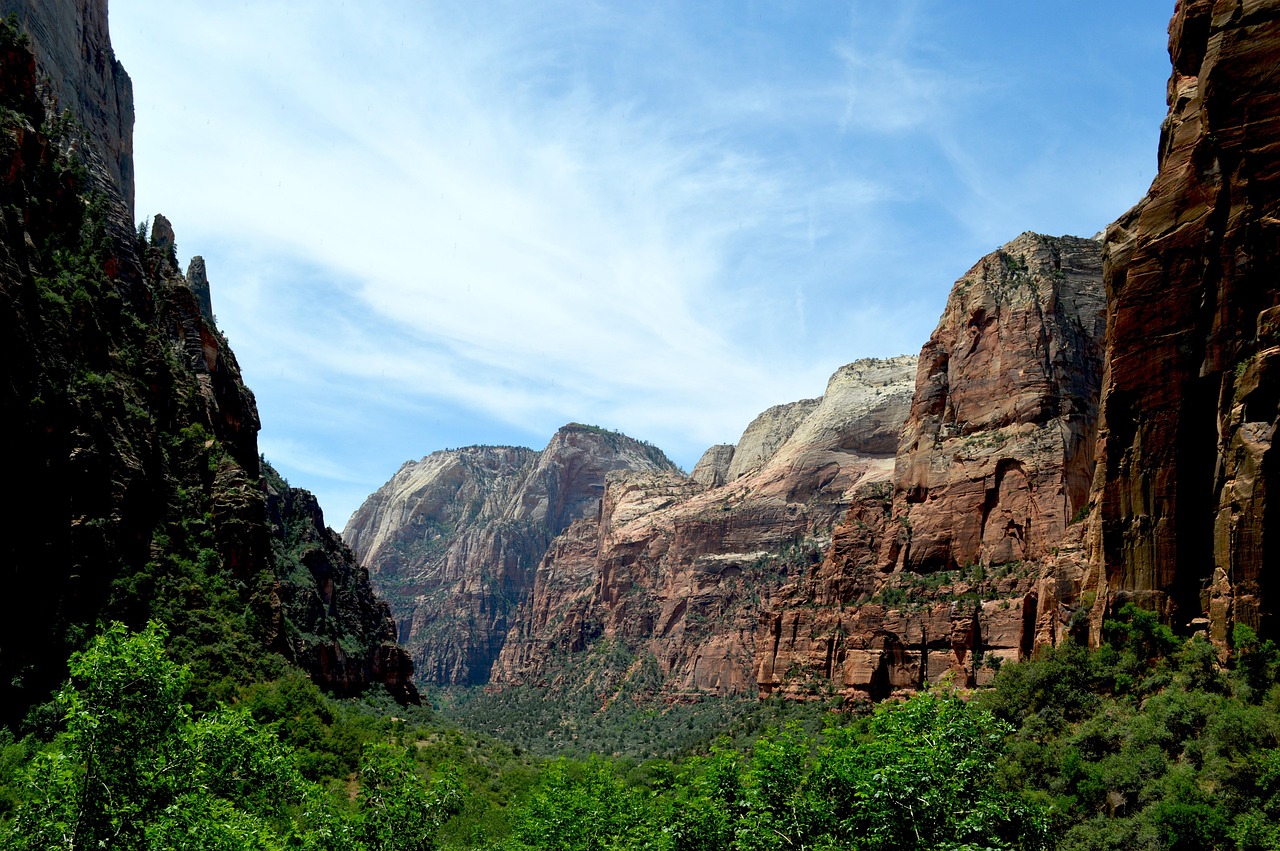
Image by: swvchris – Via Pixabay
Yearly Climate
Zion’s weather shifts fast. Summers bring high heat, with temperatures often topping 100°F. The canyon traps warmth, making midday hikes punishing. Late spring and early fall strike a better balance.
Winters can be cold, with snow dusting the upper plateaus. The park remains open year-round, though certain trails may close due to ice or flash floods.
Flash floods, especially in The Narrows, are a serious risk in summer. Storms upstream can trigger water surges in narrow canyons. Rangers issue alerts, and these must be respected.
Season-by-Season Breakdown
-
Spring (March–May)
Wildflowers bloom. Waterfalls flow strong. Trails are cooler but crowded. -
Summer (June–August)
Hot and busy. Shuttle system operates. Early morning or evening hikes best. -
Fall (September–November)
Foliage turns gold. Weather cools. Clear skies prevail. -
Winter (December–February)
Cold nights and mild days. Fewer visitors. Snow possible at higher elevations.
Best Time of Year to Visit
Late March through May and September through November offer the best mix of comfort and color. Spring gives vibrant plant life and full waterfalls. Autumn brings mild temperatures and golden cottonwoods.
Mid-week visits beat weekend crowds. Arriving early ensures a parking spot and a more serene start to the day. Avoid holiday weekends if peace is the goal.
In summer, early risers win. Start hikes before the heat climbs. Always carry water and wear sun protection.
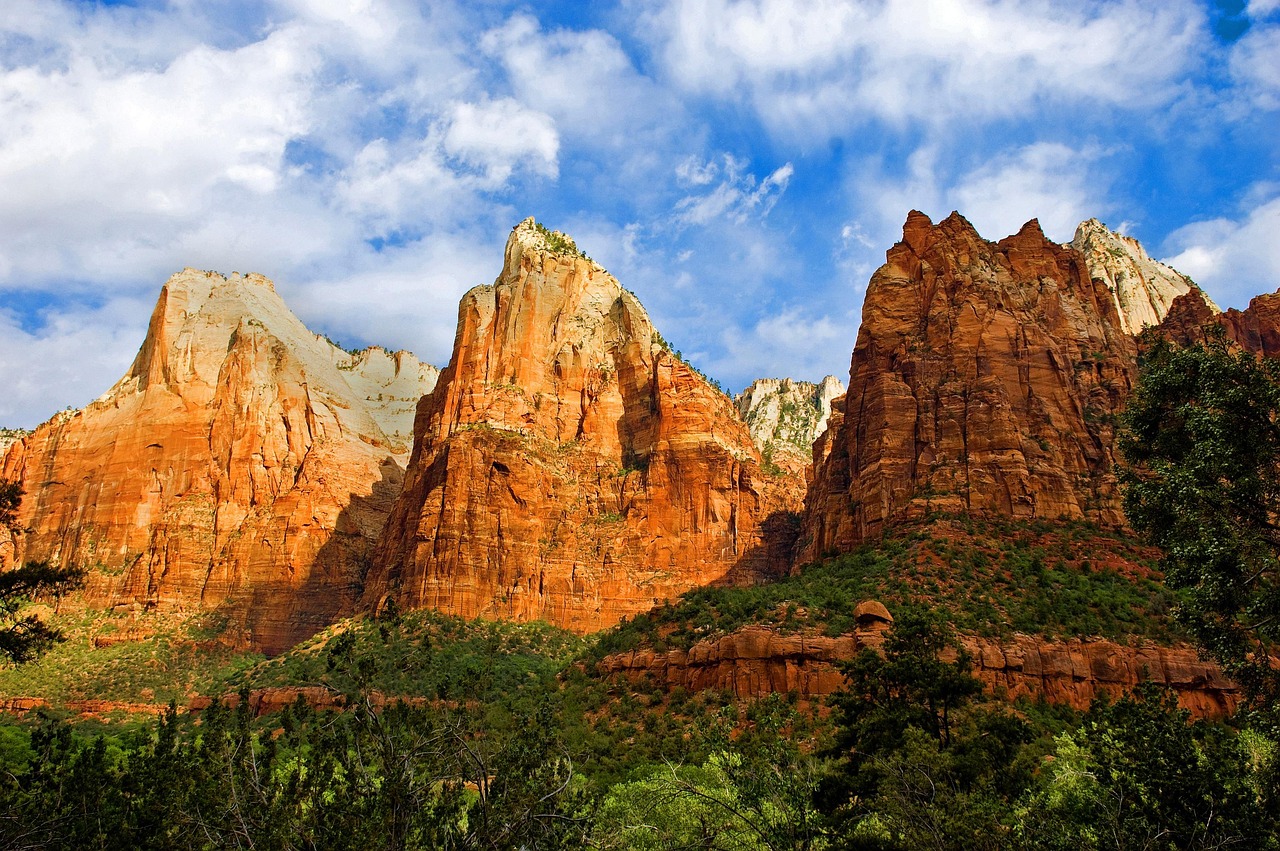
Image by: Designtek – Via Pixabay
In Summary…
Zion National Park is both an escape and a lesson. It teaches patience, offering slow views and long silences. Its trails reward those who move with care. Rivers carve rock here, not with speed, but with time and grit.
Each path, each turn, each moment spent in its vast space becomes a chapter in memory. Whether standing on the cliffs of Angels Landing or walking the quiet banks of the Virgin River, Zion leaves a mark.
This is a land of color and contrast. Of old stone and fresh air. Of high cliffs and deep canyons. It waits not for the hurried, but for those who come to watch the sky change and hear the wind speak.

